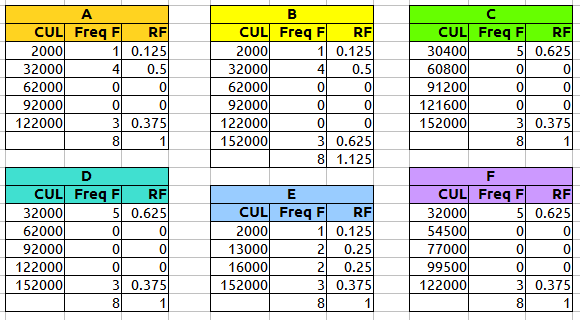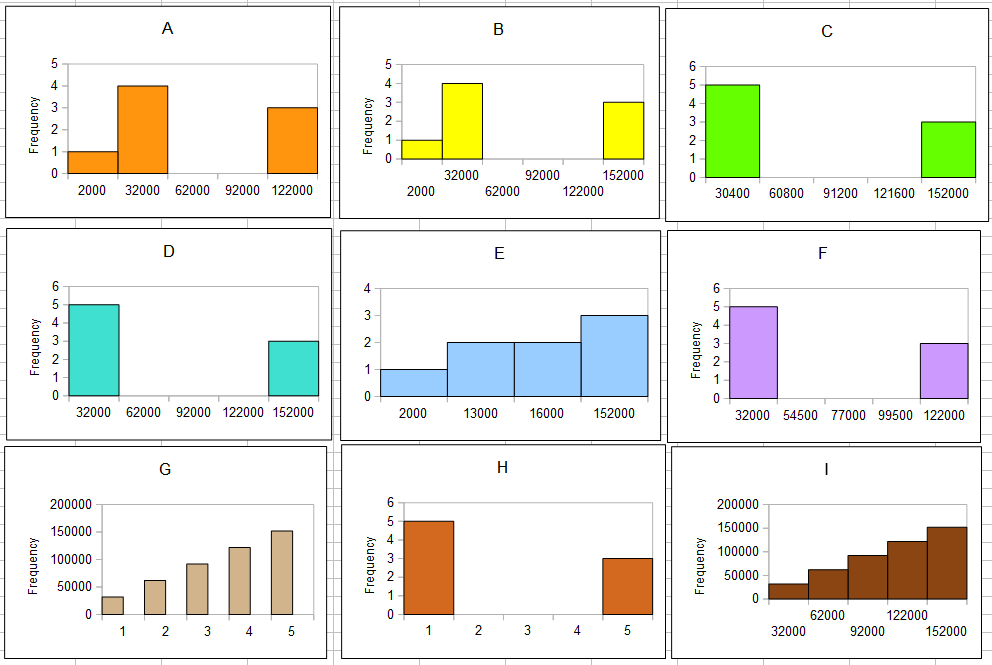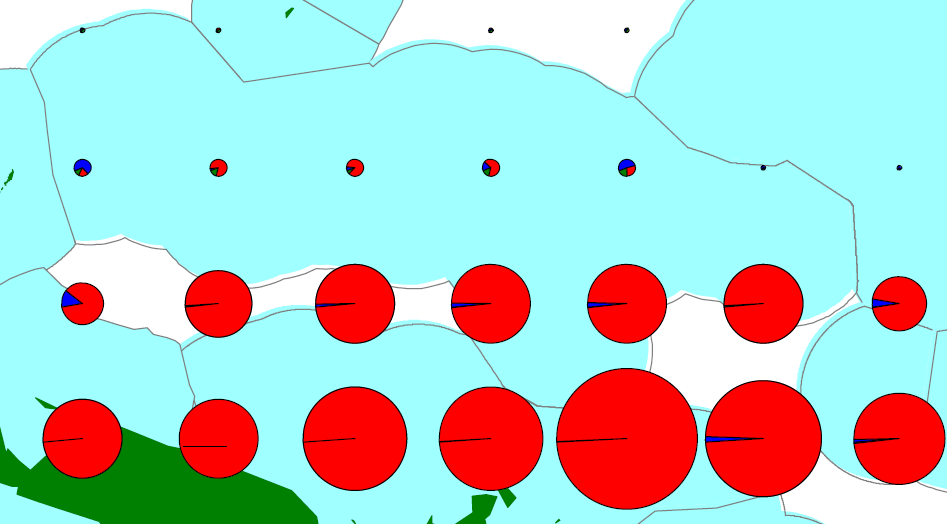| Class upper limits | Frequency F | Rel. Freq. |
|---|---|---|
| Sums: |


In the upcoming election on the third of March the citizens of Chuuk state will be asked to vote on whether to secede from the Federated States of Micronesia. Those who favor secession have a number of reasons for seeking separation. One the reasons the secessionists have cited is a desire to retain the full tuna licensing fees for fish caught in the waters of the FSM. At a recent presentation by the Chuuk Political Status Commission, members of the national government noted that the bulk of the tuna is caught in the equatorial waters of Pohnpei and Kosrae state, primarily the waters around Kapingamarangi. While state level catch data is not available, charts from the Western and Central Pacific Fisheries Commission (WCPFC) provide some information on how much fish is caught by location. That data supports the statements made by the national government - roughly only three percent of the fish caught in the waters of the FSM appear to be caught in the waters of Chuuk state.
This election year midterm uses skipjack tuna catch data estimates in tonnes made from a chart of total catch 2007-2009. Use the tonnes of skipjack to answer the following questions. Skipjack tuna has the Latin name Katsuwonus pelamis and is known locally as angaraap (Chuuk), kasuo (Pohnpei), katsuo (Kosrae), and garngab (Yap).
| Location | Tonnes Skipjack |
|---|---|
| Yap west | 13000 |
| Yap outer island | 16000 |
| Chuuk | 16000 |
| Pohnpei | 13000 |
| Pohnpei Kapinga west | 152000 |
| Pohnpei Kapinga east | 152000 |
| Kosrae | 2000 |
| Kosrae southern waters | 152000 |
| Class upper limits | Frequency F | Rel. Freq. |
|---|---|---|
| Sums: |


The growth rate of skipjack tuna is a factor in the sustainable yield calculations. The following table reports on the age of skipjack in months and the length in centimeters. Use this data for the paired data questions.
| Age (months) | Length (cm) |
|---|---|
| 0.8 | 3.7 |
| 1.6 | 7.3 |
| 2.1 | 10.7 |
| 3.2 | 16.0 |
| 5.5 | 27.0 |
| 6.9 | 29.5 |
| 8.9 | 35.3 |
| 11.1 | 42.2 |
| 15.1 | 51.0 |
| 19.5 | 60.4 |
| 23.8 | 70.1 |
| 34.7 | 80.3 |
Supporting data:


http://www.spc.int/oceanfish/en/ofpsection/sam/sam/213-skipjack-assessment-results
http://www.spc.int/tagging/en/about-tagging/stock-assessment
http://www.spc.int/oceanfish/en/tuna-fisheries/overview-tuna-fisheries/172-purse-seine
http://www.spc.int/oceanfish/en/ofpsection/sam/410-condition-of-bigeye-tuna-in-the-western-and-central-pacific-worsening-skipjack-and-yellowfin-healthy-new-spc-assessments-released-
http://www.spc.int/oceanfish/en/ofpsection/sam
http://iss-foundation.org/resources/downloads/?did=542
http://fishing-living.org/the-fishery-federated-states-of-micronesia/
https://www.wcpfc.int/wcpfc-public-domain-aggregated-catcheffort-data-download-page?sid=9093
http://www.spc.int/DigitalLibrary/Doc/FAME/Meetings/AdHoc_Meeting_Skipjack_Fisheries/1976/WP10.pdf
Money values:
http://www.fsmopa.fm/files/onpa/Final%20Audit%20Report%20No.%202012-03%20Compressed%20Version%20in%20MB%20size%281%29.pdf
For the past three years, the revenue generated from fishing rights was approximately $20 million in 2009, $17.7 million in 2010 and $ 18.8 million in 2011. Another crucial benefit of tuna industry to the FSM economy is the employment it provides
http://www.fao.org/fi/oldsite/FCP/en/FSM/body.htm
LOCATION AND MAIN LANDING PLACES 1999
Main landing places
Landing sites for industrial tuna fishing vessels exist on the principal islands of each of four states of the Federated States of Micronesia (FSM), but as most of the vessels are based in Pohnpei, most offloading occurs there. Small-scale commercial fisheries are also focused on the population centres in each state, while subsistence fishery landings are scattered throughout the country.
Estimated landings by principal site (tonnes)
| Offshore Locally-based | Coastal Commercial | Subsistence | Total | |
|---|---|---|---|---|
| Kolonia (Pohnpei) | 2000 | 1700 | 650 | 4350 |
| Weno (Chuuk) | 250 | 2000 | 500 | 2750 |
| Colonia (Yap) | 200 | 800 | 500 | 1500 |
| Lelu (Kosrae) | 50 | 200 | 250 | 500 |
| Other | 0 | 300 | 3100 | 3400 |
| TOTAL | 2500 | 5000 | 5000 | 12500 |